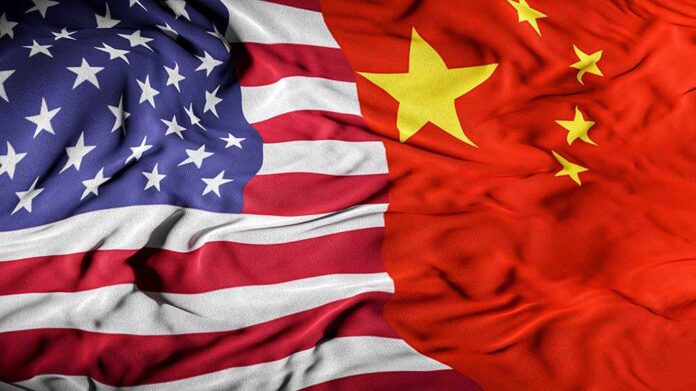
President Trump secures critical rare earth minerals for American military production in an unprecedented China trade deal, marking a major victory for U.S. national security and economic interests.
Key Takeaways
- President Trump has negotiated a trade deal with China that ensures U.S. access to rare earth minerals essential for military equipment, while maintaining tariffs that protect American interests.
- The agreement includes a 55% tariff on Chinese goods entering the U.S., while China will impose a 10% tariff on American products.
- Chinese students will continue to have access to American educational institutions as part of the negotiated terms.
- The deal addresses national security concerns as China controls 60% of global rare earth production and processes 90% of these critical materials.
- Commerce Secretary Howard Lutnick confirmed the agreement is awaiting final approval from both President Trump and President Xi.
Strategic Minerals for American Security
President Trump announced a landmark trade agreement with China that secures access to rare earth minerals critical for U.S. military production. The deal addresses a key vulnerability in America’s defense supply chain, as these minerals are essential components in F-35 fighter jets, nuclear submarines, missiles, radar systems, and smart bombs. China’s previous export restrictions on these materials had posed a significant threat to American national security interests, particularly as tensions between the two nations intensified in recent years.
President Trump shared details of the agreement on Truth Social, stating: “Our deal with China is done, subject to final approval with President Xi and me. Full magnets, and any necessary rare earths, will be supplied, up front, by China.” This represents a critical breakthrough given China’s dominance in the rare earth supply chain, controlling 60% of global production and 90% of processing capacity. The agreement ensures America can maintain production of vital defense technologies despite increasing competition with China.
President Trump declared on Wednesday that a U.S. trade "deal with China is done." He offered a few key details of the agreement reached between senior U.S. and Chinese trade representatives.
https://t.co/iyo72YCVs7— WJZ | CBS Baltimore (@wjz) June 11, 2025
Tariff Structure and Economic Impact
Under the new agreement, American tariffs on Chinese goods will increase to 55%, while Chinese tariffs on American goods will be set at 10%. President Trump emphasized the favorable terms, declaring: “WE ARE GETTING A TOTAL OF 55% TARIFFS, CHINA IS GETTING 10%. RELATIONSHIP IS EXCELLENT!” This asymmetric tariff structure reflects Trump’s commitment to addressing the U.S. trade deficit with China, which reached $295.4 billion in 2024, while maintaining strong diplomatic relations.
“This trade deal is a win for the United States, demonstrating President Trump’s unparalleled expertise in securing deals that benefit the American people,” said President Donald J. Trump.
However, some business leaders have expressed concerns about the economic impact of the tariffs. “A 55% tariff from China will substantially cause instability for consumer goods companies that are bringing goods in from China,” warned Bruce Kaminstein, an industry expert. Walmart CEO Doug McMillon also cautioned that retailers might need to raise prices, noting, “Given the magnitude of the tariffs, even at the reduced levels announced this week, we aren’t able to absorb all the pressure given the reality of narrow retail margins.”
🥳 BREAKING: The USA-China Trade Deal Finalized! 🥳
It's official, and it's not pretty for China. When I woke up this morning, I was stunned. This deal tells me that they are struggling much worse than I realized. What a brutal blow to their export business. Keep reading.
— Jon Elder | Amazon & Walmart Growth (@BlackLabelAdvsr) June 11, 2025
Educational Access and Bilateral Relations
In a significant policy clarification, President Trump announced that Chinese students will continue to have access to American educational institutions as part of the deal. “WE WILL PROVIDE TO CHINA WHAT WAS AGREED TO, INCLUDING CHINESE STUDENTS USING OUR COLLEGES AND UNIVERSITIES (WHICH HAS ALWAYS BEEN GOOD WITH ME!),” Trump stated. This reverses earlier concerns about potential visa restrictions for Chinese students with connections to the Chinese Communist Party or those studying in critical technological fields.
“Unlike previous administrations, President Trump took a tough, uncompromising stance on China to protect American interests and stop unfair trade practices,” said President Donald J. Trump.
Commerce Secretary Howard Lutnick confirmed the agreement’s framework, stating, “We have reached a framework to implement the Geneva consensus and the call between the two presidents.” The Chinese government has been more measured in its public comments, describing the talks as “reasonable” and “frank” while emphasizing the importance of integrity in fulfilling commitments. Both nations will establish mechanisms for ongoing trade and economic discussions, with collaboration also planned to combat the flow of fentanyl and other precursors to North America.
Military and Strategic Implications
National security experts highlight the critical importance of securing rare earth supplies for America’s defense capabilities. “The United States is already on the back foot when it comes to manufacturing these defense technologies. China is rapidly expanding its munitions production and acquiring advanced weapons systems and equipment at a pace five to six times faster than the United States,” noted Gracelin Baskaran, a defense industry analyst. This agreement helps address a critical vulnerability in the American defense industrial base.
“Even before the latest restrictions, the US defense industrial base struggled with limited capacity and could not scale up production to meet defense technology demands. Further bans on critical minerals inputs will only widen the gap, enabling China to strengthen its military capabilities more quickly than the United States,” said Gracelin Baskaran.
The agreement represents a significant strategic victory for the Trump administration, securing access to materials essential for maintaining America’s military edge while establishing trade terms that prioritize American economic interests. By addressing both commercial concerns and national security imperatives, President Trump has demonstrated his commitment to putting America first in international negotiations while maintaining productive relations with global competitors.












